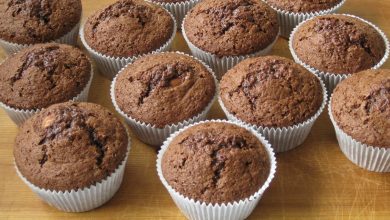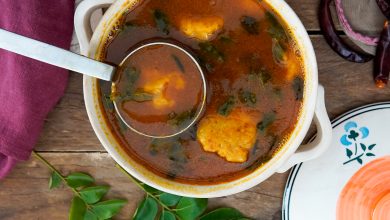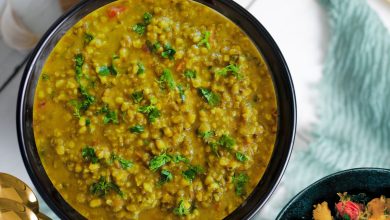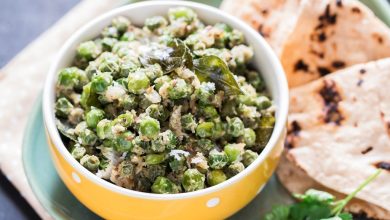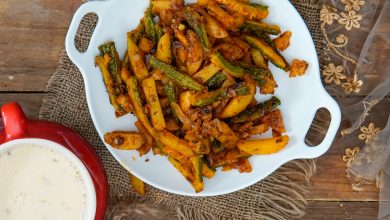Delightful Kerala Appam: Fluffy Coconut Pancakes Perfect for Any Meal
Kerala Style Appam Recipe
Delve into the world of Kerala’s culinary delights with this exquisite Kerala Style Appam recipe, a perfect blend of tradition and flavor that promises to elevate your dining experience. Known for its soft and fluffy texture, Appam is a delightful rice pancake traditionally enjoyed with a variety of curries or stews. This recipe provides step-by-step instructions to create the ideal Appam, ensuring a delightful meal that captures the essence of South Indian cuisine.
Ingredients
| Ingredient | Quantity |
|---|---|
| Rice (soaked for 3 hours) | 2 cups |
| Cooked rice | 1 cup |
| Coconut (grated) | 1 cup |
| Active dry yeast | 1 teaspoon |
| Lukewarm water | ½ cup |
| Sugar | 2 tablespoons |
| Salt | To taste |
Preparation Time
| Preparation Time | Cooking Time | Total Time |
|---|---|---|
| 200 minutes (3 hours soaking + 5-6 hours fermentation) | 30 minutes | 230 minutes |
Servings
| Servings |
|---|
| 4 |
Nutritional Information (per serving)
| Nutrient | Amount |
|---|---|
| Calories | Approximately 250 |
| Protein | 4 grams |
| Carbohydrates | 55 grams |
| Dietary Fiber | 2 grams |
| Sugars | 1 gram |
| Fat | 3 grams |
Instructions
To create your Kerala Style Appam, follow these detailed steps that ensure a perfect outcome every time:
-
Soak the Rice: Begin by soaking the rice in water for 3 to 4 hours. This step is crucial as it softens the grains and ensures a smooth batter.
-
Prepare the Yeast Mixture: In a mixing bowl, combine salt, sugar, and active dry yeast. Mix these ingredients well and let them sit for about 5 minutes. This will activate the yeast, ensuring a good fermentation process.
-
Blend the Ingredients: In a mixer grinder, add the soaked rice, cooked rice, grated coconut, a pinch of salt, and a small amount of water. Blend these ingredients until you achieve a smooth batter. The consistency should be thick yet pourable.
-
Combine and Ferment: Pour the prepared batter into a mixing bowl and add the activated yeast mixture. Stir well to combine all ingredients thoroughly. Cover the bowl with a clean cloth or lid and let it ferment for 5 to 6 hours in a warm place. The fermentation process is essential as it helps develop the appam’s signature flavor and texture.
-
Adjust the Batter: After the fermentation time has elapsed, check the batter. You may need to add water to achieve the desired consistency. The batter should not be too thin; it should be able to coat the back of a spoon without dripping too quickly.
-
Cook the Appam: Heat an appam pan or a non-stick frying pan over medium heat. Once hot, pour a ladleful of batter into the pan. Hold the pan by its handle and swirl it around, allowing the batter to spread evenly across the bottom. The appam will be thicker in the center and thinner at the edges, which is characteristic of this dish.
-
Cover and Cook: Cover the pan with a lid and let the appam cook for about 2 minutes. You’ll know it’s ready when the edges turn a light golden brown, while the center remains soft and fluffy.
-
Serve: Carefully remove the appam from the pan using a spatula. Serve your Kerala Style Appam hot with Kadla Curry or Vegetable Stew, allowing the flavors to mingle beautifully for a satisfying meal.
Serving Suggestions
Kerala Style Appam pairs wonderfully with a variety of side dishes, enhancing the overall dining experience. Here are some recommended accompaniments:
- Kadla Curry: A rich and creamy chickpea curry, bursting with flavor and perfectly balanced to complement the appam.
- Vegetable Stew: A delightful mix of seasonal vegetables simmered in coconut milk, offering a light yet flavorful contrast to the appam.
- Egg Curry: For a non-vegetarian option, a spicy egg curry can also be a great pairing, adding an additional layer of taste.
Tips for the Perfect Appam
- Fermentation: Ensure your batter is kept in a warm environment during fermentation to allow the yeast to work effectively. You can place it in an oven with just the light on for warmth.
- Consistency: The batter consistency is key; adjust the water accordingly, but avoid making it too runny, as this will affect the texture of your appam.
- Non-stick Pan: Using a non-stick appam pan makes it easier to cook and remove the appam without sticking.
With this recipe, you’ll be able to create delicious, fluffy appams that not only taste incredible but also bring a taste of Kerala to your dining table. Enjoy the art of cooking and the joy of sharing delicious meals with family and friends!


